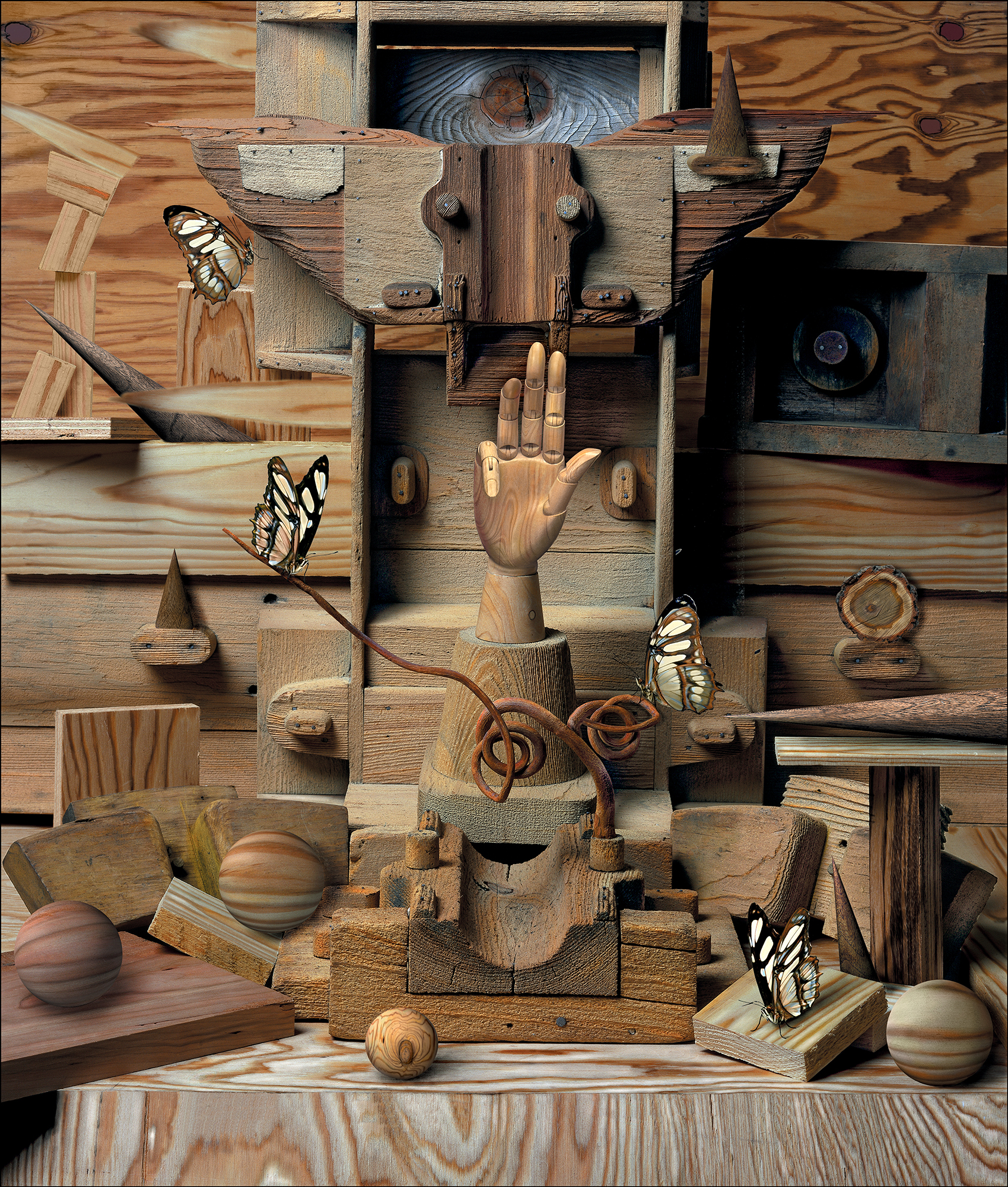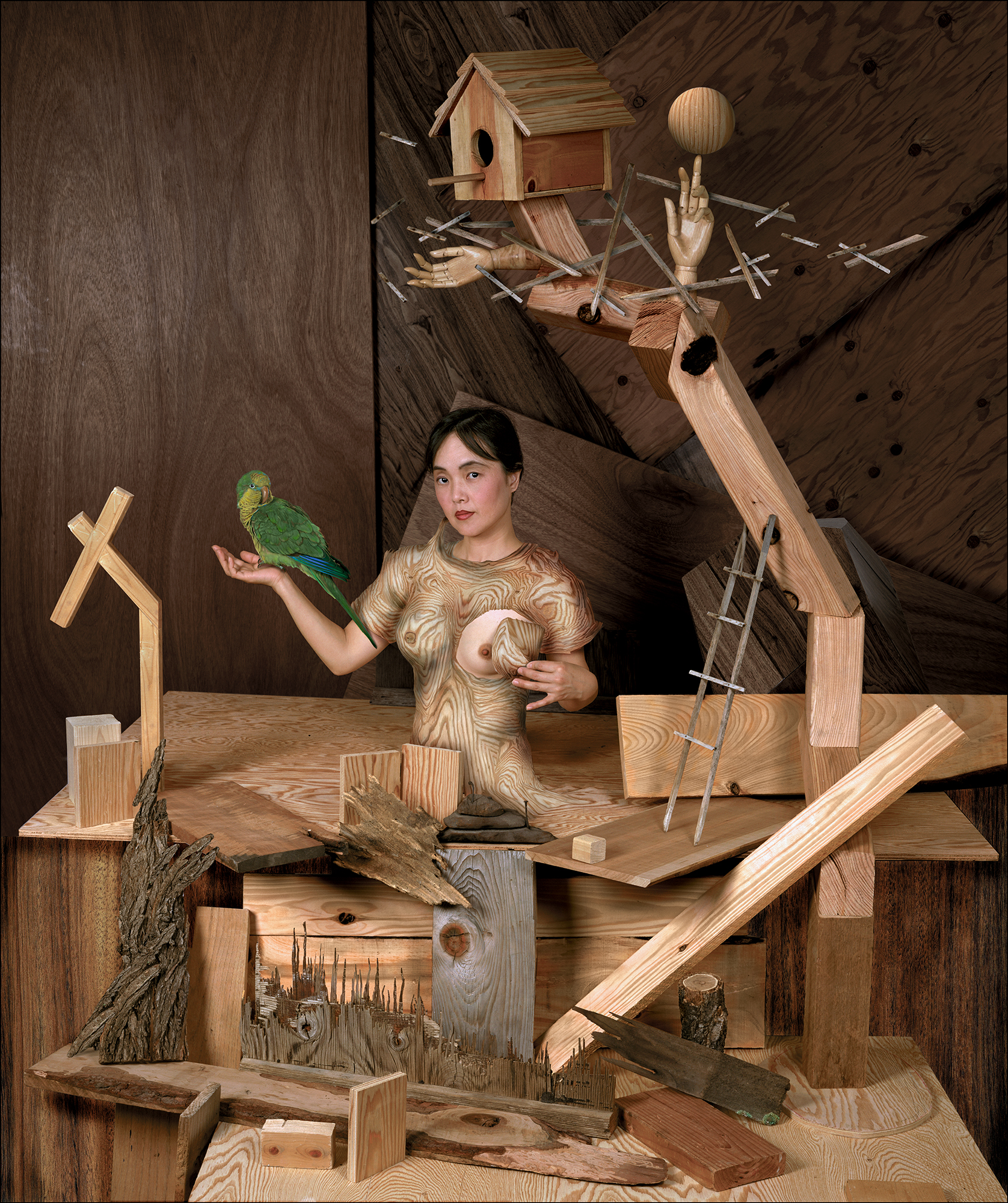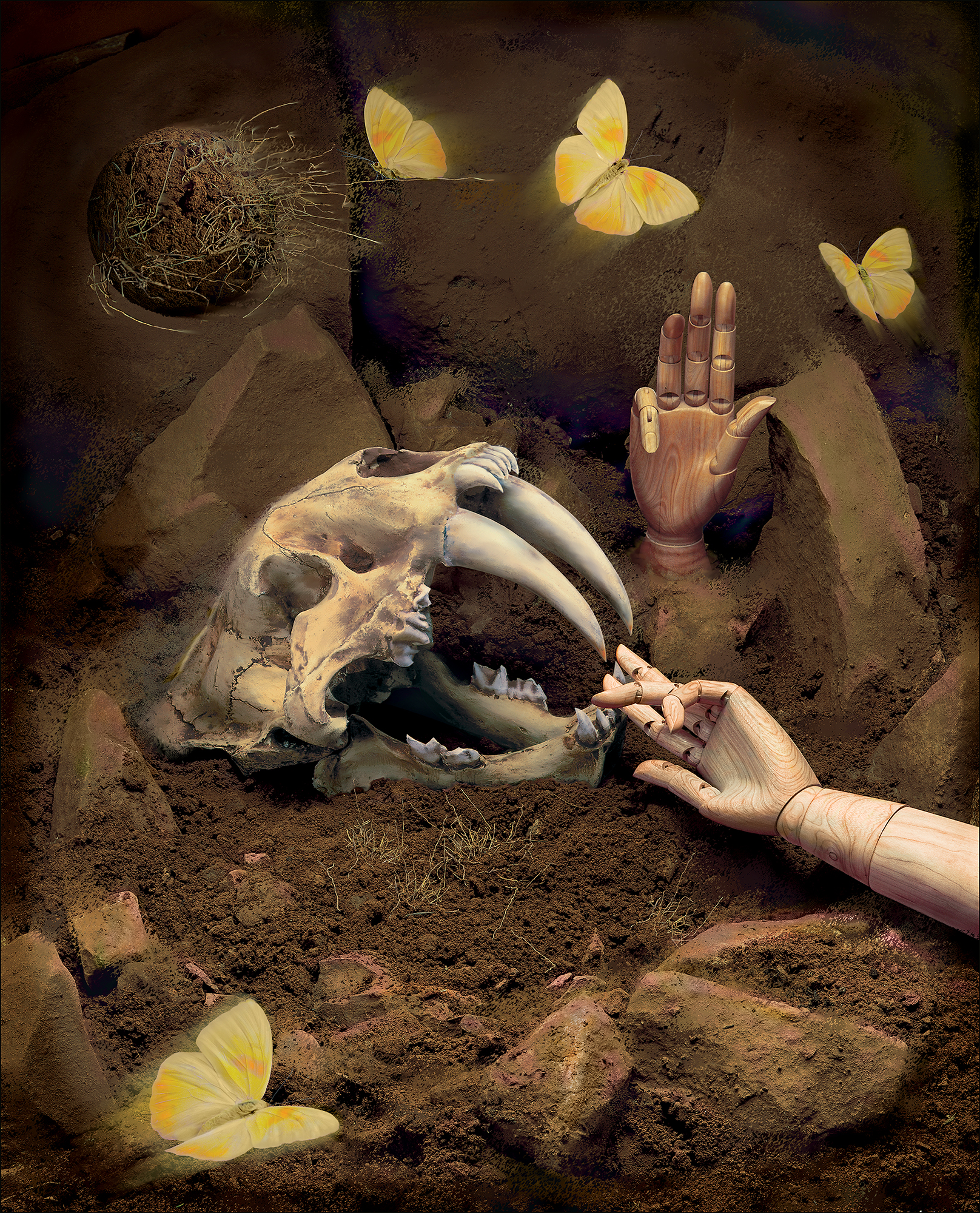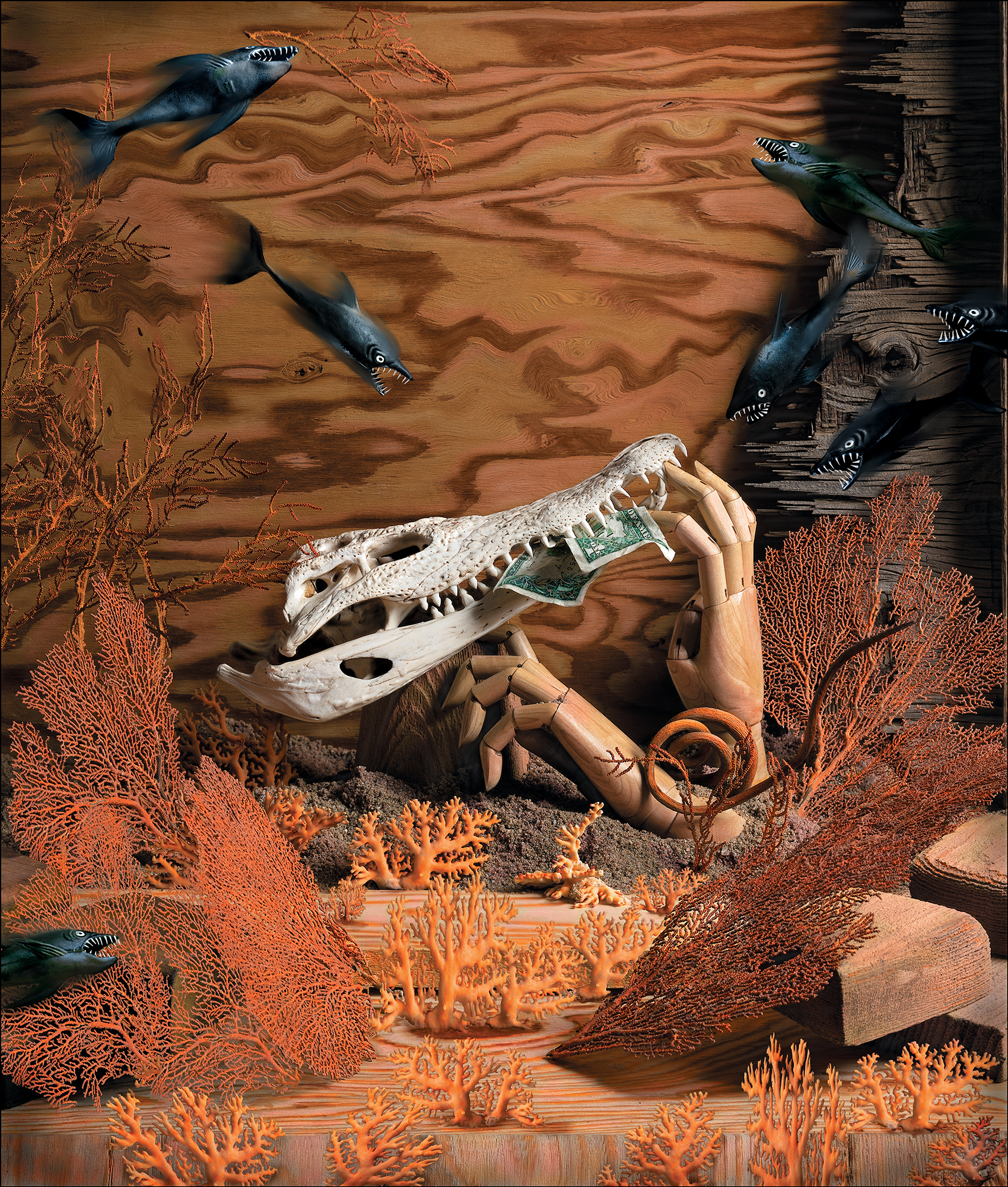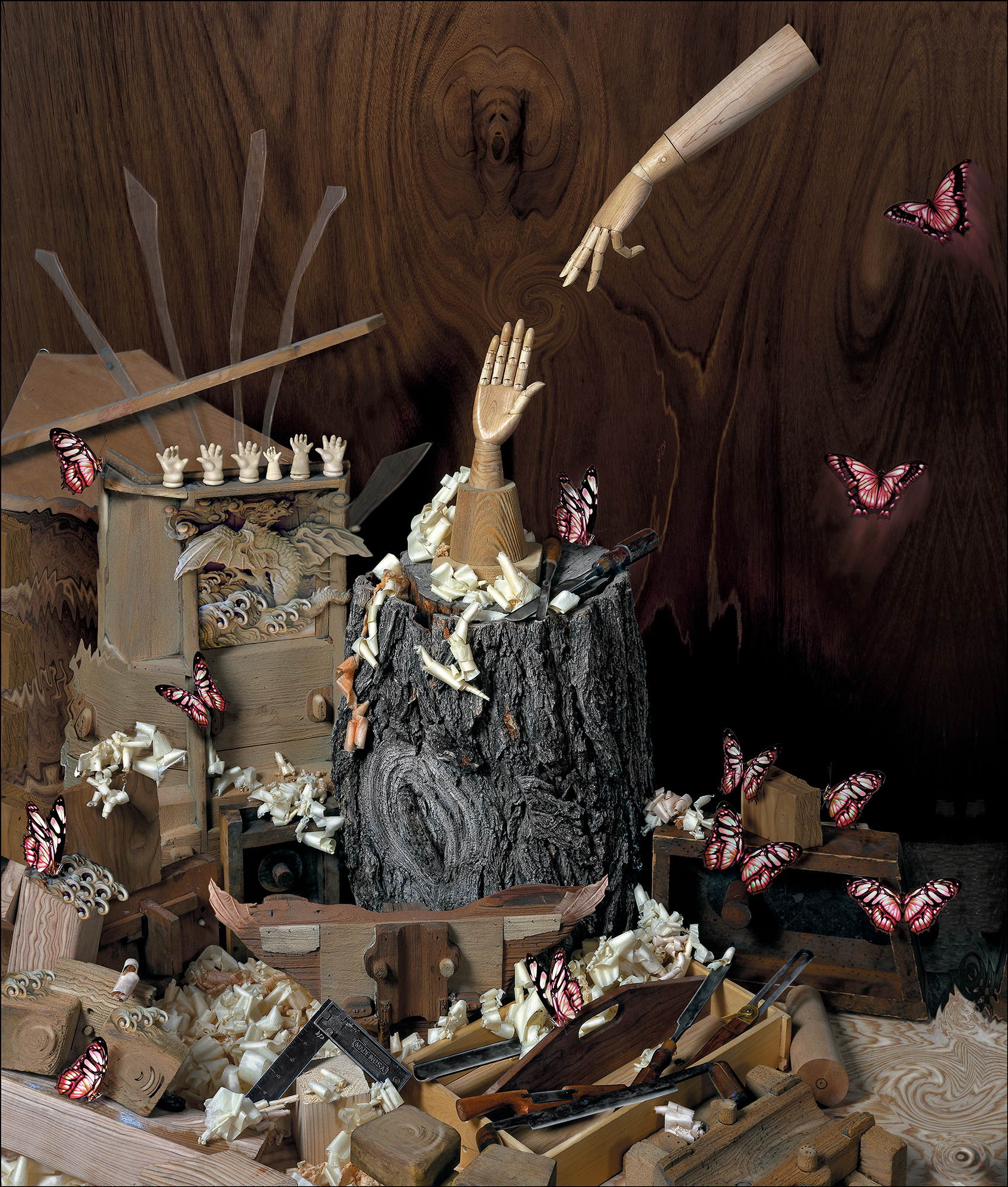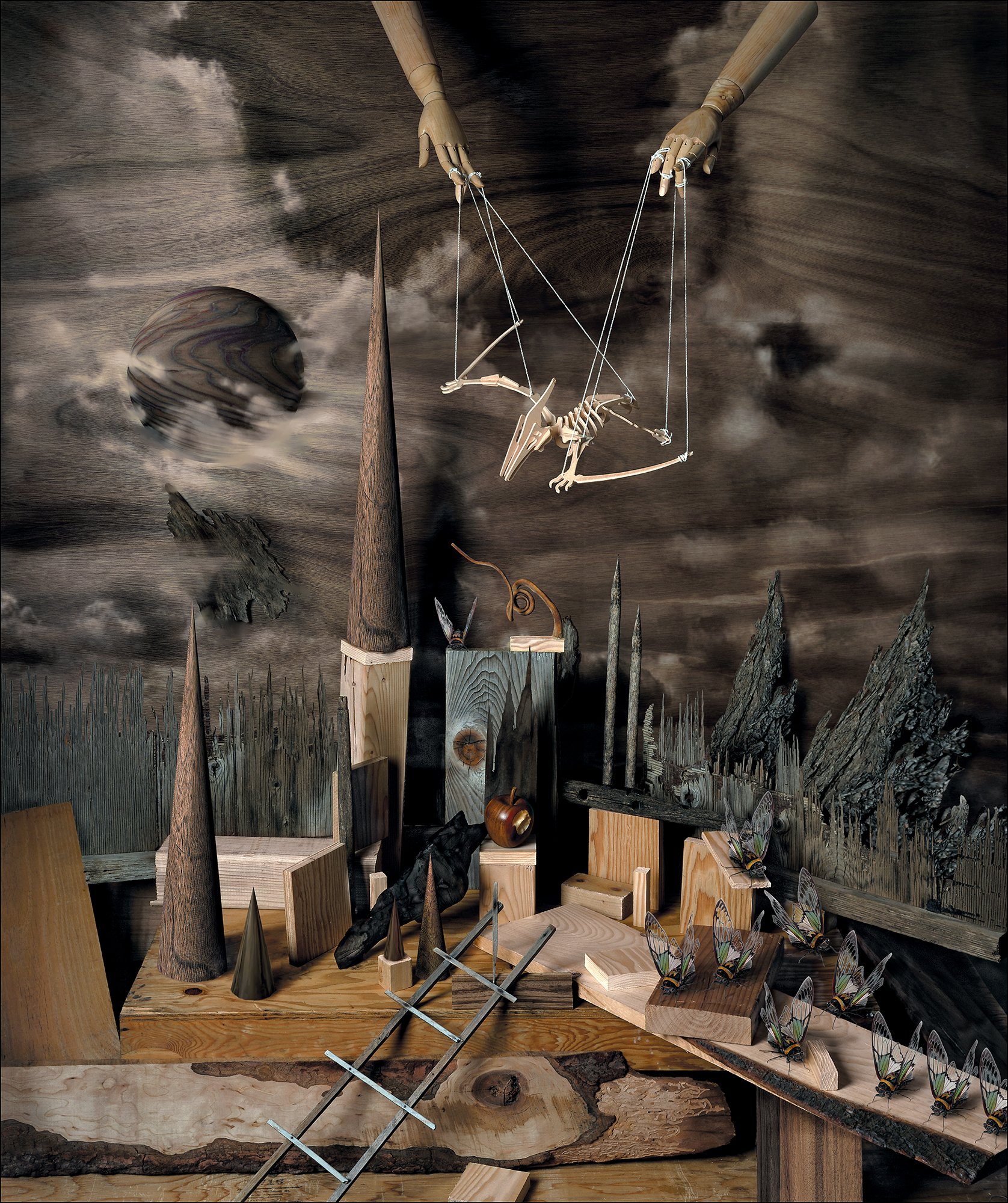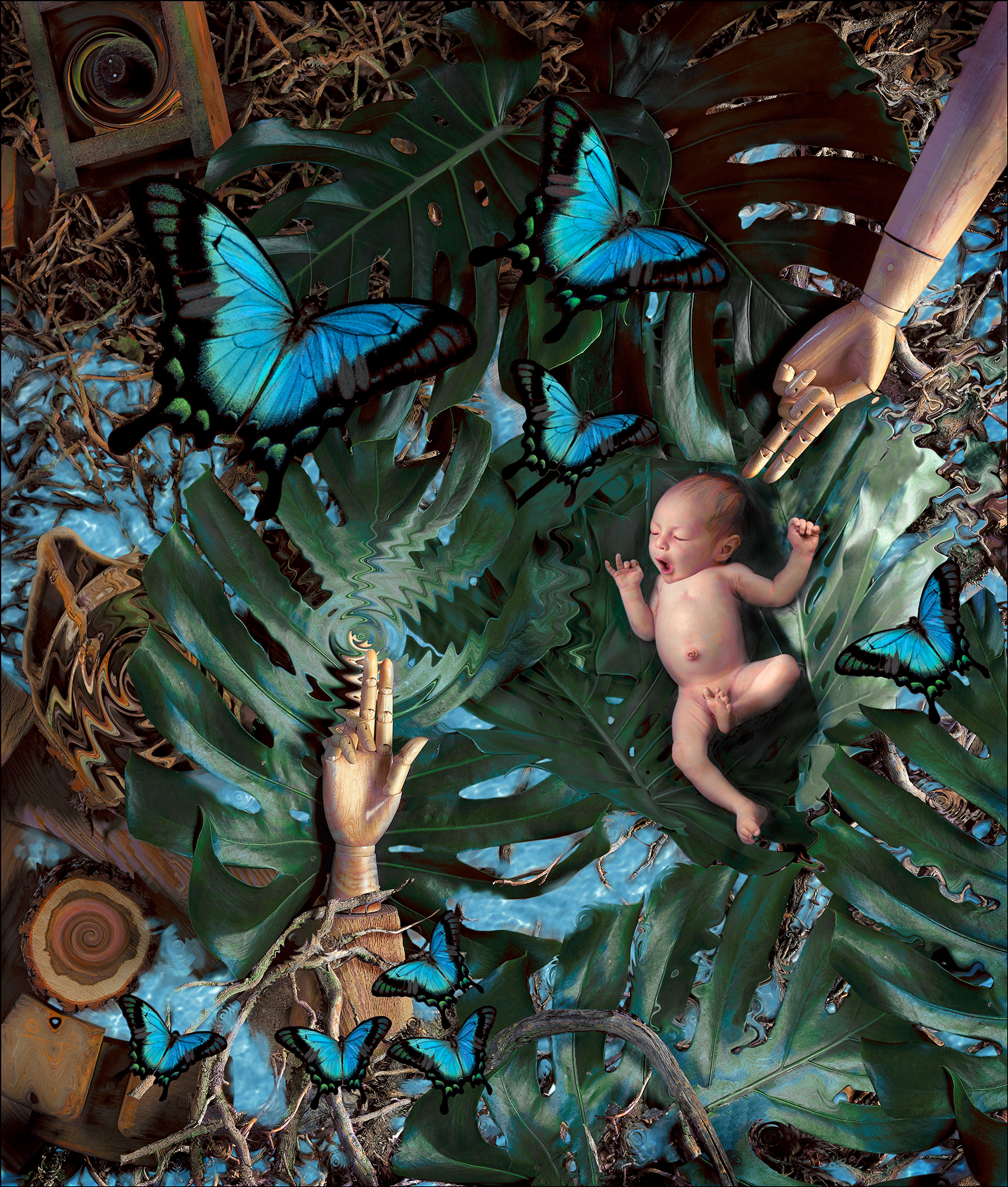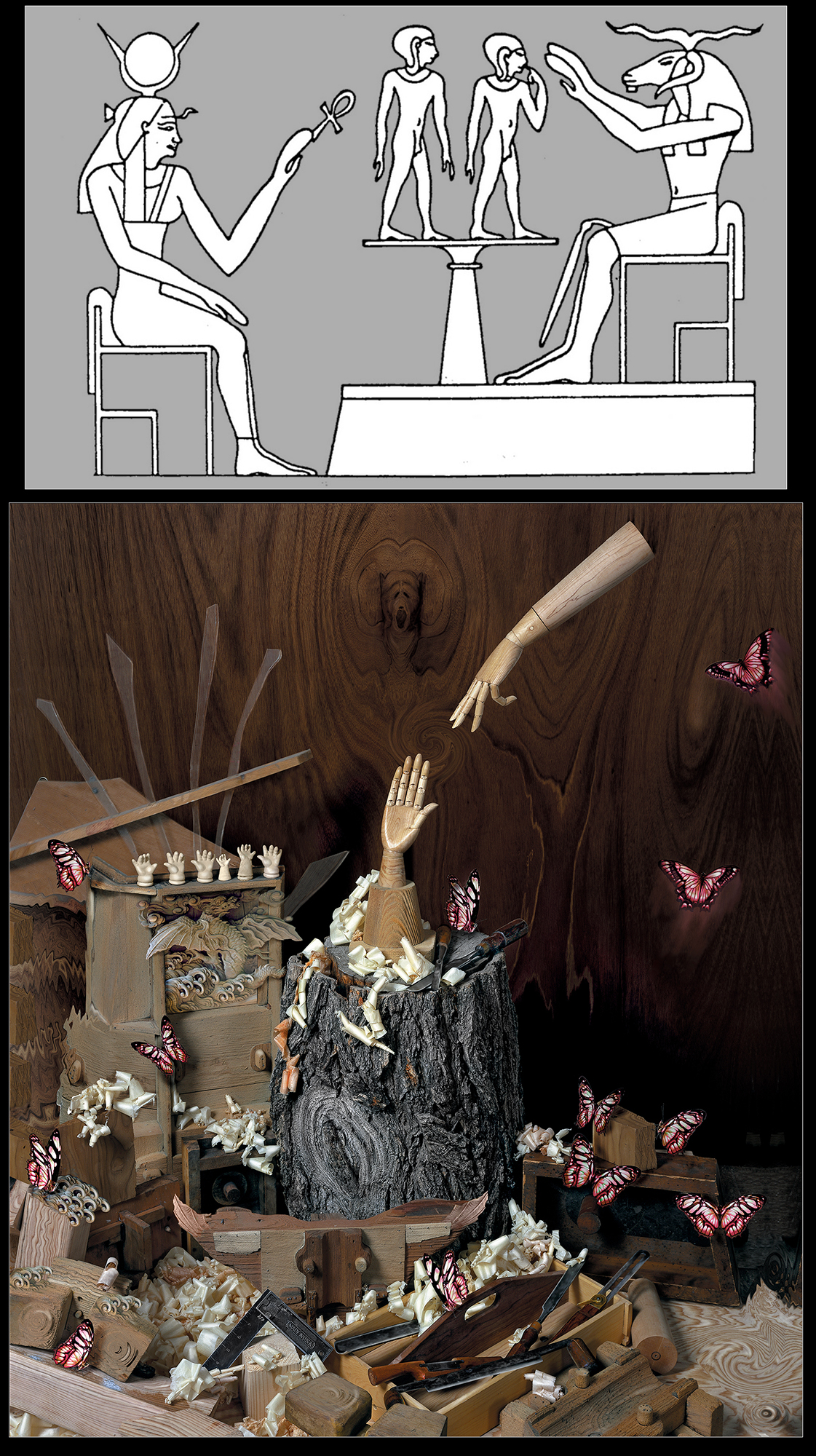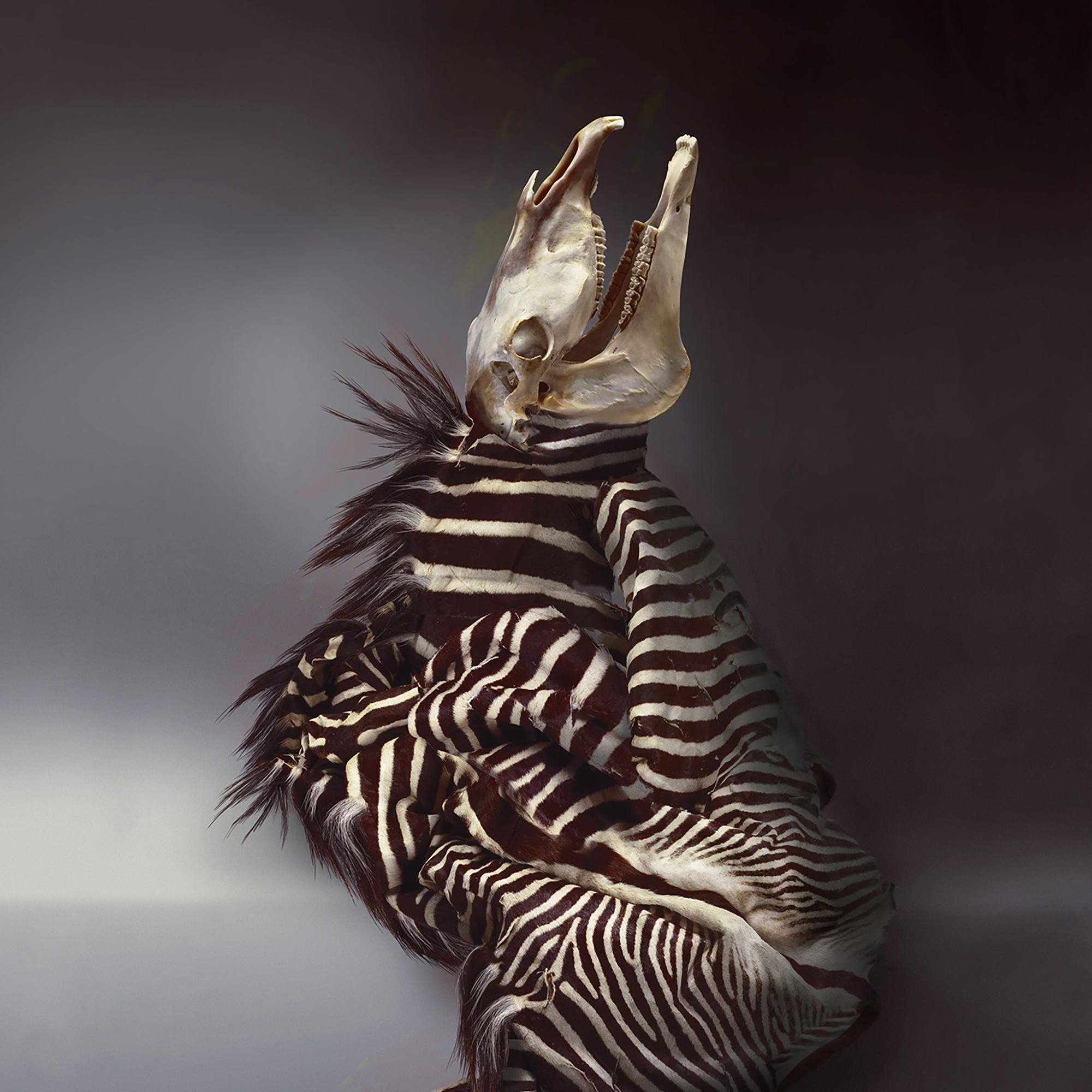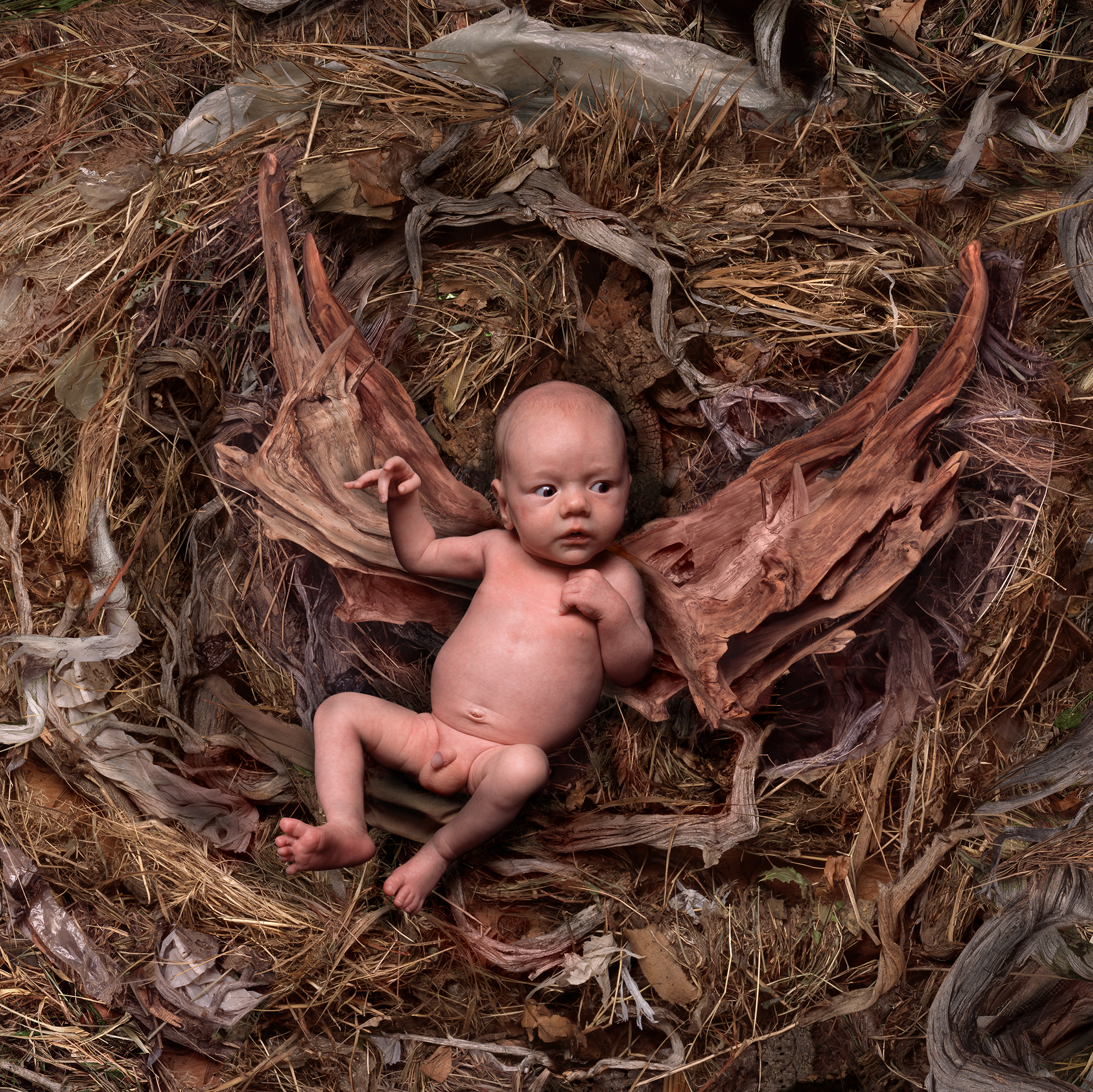
Read ZOOM article on The Blessings Series by David Crosby
JOHN BONATH
“My aim is to create new objects which cannot be compared with any object in reality. These new objects, being creations, need fear no comparisons.” These words were spoken almost a century ago by artist Juan Gris, whose name came to be closely associated with synthetic Cubism. Gris and his colleagues had picked up the abstract qualities of Picasso and Braque’s groundwork to create a new and more concrete Cubist reality. Once the viewer’s visually objective reality had been skirted in favor of a conceptually (or analytically) objective vision, the next step was as obvious to us now as it was breath-taking at the time, that is to leave the world of representation altogether. But one step before the abyss was Gris’s art, where way points from the real world still guided the viewer’s reading of his “new objects.”
It may seem strange to introduce the work of a contemporary digitally-based photographer with a few words from the Cubist annals, but there is a case to be made for drawing the parallel. Though the images in John Bonath’s recent series “Blessings” are highly un-Cubist in their narrative, even allegorical nature, it is their sheer woodiness that brings the Cubism connection to mind. After all, synthetic Cubism owes its origins as much as anything to the fact that Braque had apprenticed with his father as a decorator, and trompe l’oeil woodgrain was one of the first collage elements to turn up in his paintings. It is no coincidence that woodgrain was also among the first terms of the visual vocabulary to enter the lexicon of the “synthetic” digital arts: it is simple enough to recreate in a highly convincing (read high-definition) fashion and immediately recognizable even in small details. Woodgrain also remains a fascinating paradox of pictorial rendering, being absolutely objective (representational) and nonobjective (abstract) at the same time.
In fact, a closer look (a much closer look) will reveal that a good deal of the wooden imagery in Bonath’s pictures has not only been electronically cut-and-pasted but actually “synthesized” in the computer. When I asked Bonath why he chose to create and not simply stage the set-ups in the studio, he explained that “My images are not set from the point of studio construction. Rather they evolve from idea to studio construction and beyond. I can previsualize an effect and then – knowing and experimenting with the tools – create an effect to express what I am after. I don’t think of digital imagery in terms of ‘canned effects.’ There are many things in photography that are simply easier to do with the more sophisticated digital control. Even simple things like burning and dodging make me feel like I’ve moved back into the stone age when I do them in the darkroom. I take photography so far and then jump off and move into the digital realm. All the work I have done with color printing, dye transfer, photo-silk screen, platinum printing, gum bichromate, etc. has provided a basis of understanding for what I now do digitally.” While in analytical and then synthetic Cubism the whole point was making a clear break with traditional pictorial illusionism, it is the very seamlessness of Bonath’s transition from the real (the photographically real) to the synthetic that dismisses this question altogether. Like Man Ray he simply photographs what he can’t synthesize and vice versa.
John has had a rich and varied career. With an MFA behind him, he was invited to create a BFA photography program a Colorado State University (while dancing as an active member of the Storm Mountain company). After moving to Japan for four years where he taught junior high English, he returned to the States and has owned and operated Maddog Studio in Denver, Colorado, since 1992. Apart from his many personal and group exhibits in the US and Japan, John Bonath’s work has been awarded grants from over a dozen American institutions, including the Colorado Council on the Arts and the Ford Foundation.
David Crosby
ARTIST STATEMENT
The Blessings series is about the connection that life has with a universal whole beyond individual control. The term “Blessings” connotes an empowerment. Blessings also refers to the universal laws of cause and effect as relating to the concepts of karma and fate. The allegorical story lines in each of these images is established through metaphor and symbolism. These images offer ideals for the viewer to interpret and consider about the process of life.
Process Notes
Scenarios were fabricated in the studio specifically for computer manipulation. The “camera-made images” are combined with digitally created objects. By the time an image is completed nothing is left untouched by digital manipulation, whether it be color, texture, value, placement, etc. or simply construction or re-construction of an object that never existed outside of the computer. With digital control, surreal possibilities are created.
READ COMMENTARY
In 2015, this piece was featured in an exhibition at the Arvada Center for the Arts entitled “Conscious, Unconscious”. This is the statement written on this image for the show.
“Birth Rights”
The idea of birth in this work has to do with the creation of the soul. I liken it to the Ancient Egyptian idea of the soul being created on a potter’s wheel or the Greek myth of Pygmalion carving a statue that comes to life. Here the soul is carved out of wood in a special studio for creation. In this series wood is used throughout as a reference to a material that is warm and alive that we use to build with.
The butterfly is a symbol of the soul. The wooden hands, in this case, are a reference to God giving life to man from Michaelangelo’s famous “Birth of Adam”. The hand is further referenced as a repeated motif throughout including the fragments of glass.
The presence of a dragon in Asian cultures is always an omen of good fortune and connects to the future as “a birth right”. At the moment of of “life” there is also visual sound created by the gestalt face circling the wooden hands which for me is a reference to the famous “Scream” by Edward Munch. The stump pedistal also has the archetype of a vagina in it, adding further to the birth allegory.


